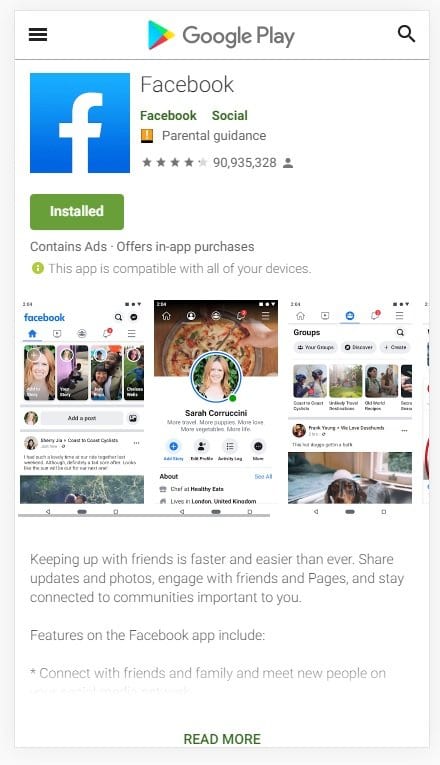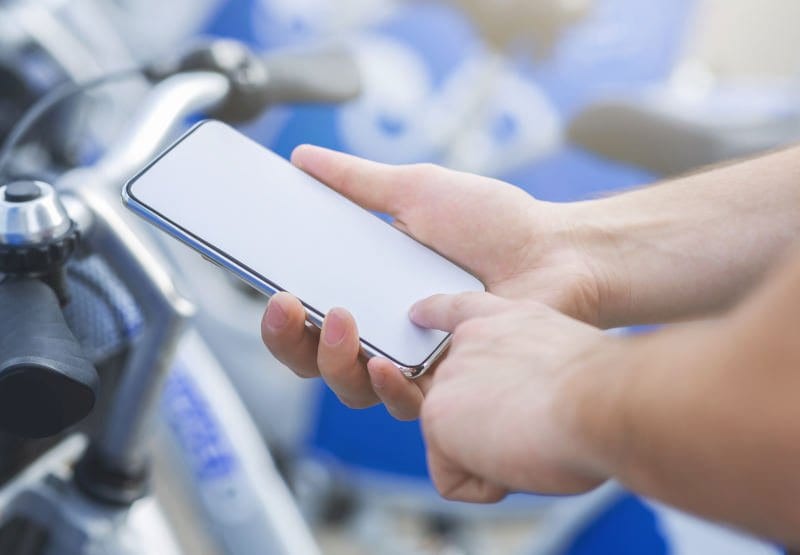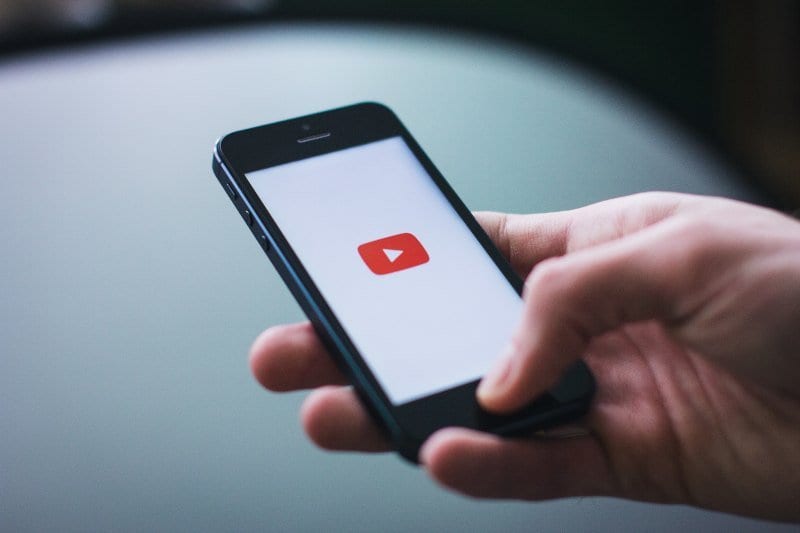
The app economy is booming. Apps have become an integral part of billions of people’s lives, whether it be Uber or Whatsapp, games or fitness platforms. Apps generate $101 billion dollars in revenue annually, and this has been growing at over 20%.
Your app deserves to be up there with the best of them. The challenge is launching an app within a really crowded space. There are around 5 million apps in the app stores, and you have to figure out how to get discovered by your target users and create the success you want so badly.
The most important place to start is with your app launch. A successful app launch can catapult you into the rare air of app winners, a world where success breeds success and you keep marching upwards. A flop of an app launch makes it very difficult to recover afterward.
In this post, we’ll take a look at how to launch an app successfully, and how to ensure that your app is set up for success.
Why launch an app
An app is a phenomenal opportunity to connect to a target audience. Through an app, you can add value, offer functionality, improve people’s lives, and have the opportunity to access significant revenue streams.

Our ASO experts and Marketing specialists are here to help you achieve success.
The reasons for launching an app will vary. Some of these can include:
- Revenue generation
- Public service
- Brand awareness
Revenue generation: Leading apps have made millions of dollars for their creators. In fact, some like Snapchat, have gone on to become successful public companies. Revenues do not have to be generated only from a paid purchase in the app stores.
There are in-app purchases, advertising opportunities, and many other ways to make money from an app. Of course for an app to be successful from a financial perspective, it also has to add value. We’ll talk more about this in a bit.
Public service: There are plenty of apps out there whose primary purpose is to provide a service. These can include emergency warning apps, transport apps or government-related apps, for example.
Brand awareness: As a brand, most of your fans are using apps through their mobile devices. Apps are therefore a great way to connect and spread your message — not to mention inform users about sales, specials, and other important pieces of communication. Many brands will encourage users to download their app for this reason.
We also chose the “Why launch an app” headline for a reason, as opposed to “Why create an app”.
Creating an app can almost be the easy part. Unfortunately, just a good idea around creating an app isn’t enough, even if it’s completely revolutionary.
To actually be used and make an impact, an app has to be launched. There needs to be a buzz around it, there needs to be a launch plan in place, and there needs to be a well thought out marketing strategy around ensuring the app’s success.
What makes a successful app
There’s obviously no point in launching an app that’s doomed to fail. Nothing can lead you quicker to financial ruin than putting good advertising dollars behind a poor product.
Before we even start talking about an app launch, it’s important to make sure that your app itself is ready to shine. Does it need to be perfect?
Absolutely not. In fact, if you waited for that to happen, you might never launch at all. Even Facebook is still perfecting its product. But it has to be good enough.

We’ve identified 4 areas that your app should hit in order to give it the best chance of success. The more of these your app includes, the better its chances of climbing the charts are.
Your app should:
- Add value
- Be sticky
- Be shareable
- Be easy to use and understand
Add value: There are some apps out there that add literally zero value. You might have come across them, like the fingerprint reader apps on phones that don’t include fingerprint functionality. Or some “future prediction” apps that are complete nonsense.
There was even the famous case of the “Yo” app that just allowed you to send a “Yo” to other users (and that somehow raised millions of dollars). What we’ve seen as the number one common denominator across successful apps, is that there is an element of adding value.
It could be in the form of a fitness app adding health value, a game adding entertainment value, or any other form of adding something to the user’s life. Does your app add value to your target users? Ensure you’re clear on your value add before moving forward.
Stickiness: Most successful apps aren’t built for one-time usage. They keep users coming back for more, by design. There are many different ways you can make your app sticky, from gamification to new features. Speak to experts who know what mobile marketing is and how it’s done to ensure you’re maximizing the stickiness effect within your mobile app.
Shareable: Another common trait across successful apps is that they are shareable. That is either the app itself, or the messaging around the app, can easily be shared socially. This can be in the form of inviting friends to the app or even just posting results to social media.
Easy to use and understand: We’ve seen so many apps that were really incredible, with deep aspects to them that had been thoughtfully designed.
Unfortunately, some of these apps would have complicated onboarding processes or would be difficult to intuitively understand for new users. This resulted in users downloading the app but then discarding it soon afterward.
It was not until we solved issues around usability that the apps were truly appreciated and successful. UI/UX touches are sometimes brushed aside by app developers, but they are critical when it comes to building successful apps.
Before you launch
Before you launch your app, you need to have the correct launch strategy in place. Just like you wouldn’t plan a road trip without a map, so too, you can’t expect success for your mobile app without a solid plan in place.
Generally speaking, a launch plan consists of the following steps:
- Research
- Target audience
- Validation
- Marketing strategy
- Specific Pre-launch activities
- Launch
- Post launch
Research: Research starts with focusing on your unique selling points and differentiating factors. What makes you unique? What are you offering that others aren’t?
Where does your advantage lie? We’ll see later how important this step is when it comes to your app launch.
Research also includes competitor analysis. Who are your main competitors? Where do their strengths and weaknesses lie?
It’s useful to plot out all your competitors on a grid and to chart where your offering is on this grid too. This makes it easy to really zoom in on what makes you better and what messages to emphasize.
Target audience: Next, you’ll look at identifying your target audience. What type of audience is going to be interested in your app?
Once you have narrowed down your target audience, your next task will be to figure out your messaging and platforms to best appeal to your audience. Not only does your message to your specific audience need to resonate, but the way it is delivered needs to be relevant and consistent.
For example, apps aimed at older users might decide that Facebook is the best place to give over their message, while apps targeting younger users might choose Snapchat.
Validation: At this point, it’s important to perform market validation, that is to ensure that your app is a good fit for your market and that the demand for such an app exists. It’s not a binary yes/no, but rather an opportunity to make final tweaks to ensure you have the highest chances of success upon launching.
Marketing strategy and marketing plan: This is where it really starts getting exciting. How do you let the world know about your awesome new app (or awesome upgraded app, for that matter)? The most common channels are social media (most commonly Instagram and Facebook, but also channels like Pinterest), email marketing (an email address is gold), Google ads, in-app ads, and display ads.
Your marketing messages have to be consistent, on-brand and engaging. They have to stand out, be noticed, and still give across your main message to your target audience.
PR is a great way to give your launch a boost. The more articles and appearances you can garner for your app, the better. This adds to the social buzz and has a powerful multiplier effect.
Our ASO experts and Marketing specialists are here to help you achieve success.
The best launch campaigns are rolled out much like a story unfolding. First, there is making a splash and building suspense. Build buzz now, and you will rap the rewards later.
Then, there is more about the app and its benefits. Finally, there are ads with compelling calls to action. You can even look at doing pre orders for your app.
There are other channels that have become popular from an app marketing perspective, that aren’t necessarily exclusively online. For example, TV, radio, and billboards have been successful when it comes to promoting an app launch.
Finally, don’t forget about Influencer Marketing. Influencers have the ability to magnify your message. While some brands tend to go “all in” for a big name (one mention from a star like Kim Kardashian can cost millions of dollars), others prefer using a network of micro influencers.
Pre-launch checklist
Just like a flight about to take off, as the pilot of your product launch, there is a pre-launch checklist that is helpful to go over:
- Is your app is ready for the traffic?
- Is support on call?
- Are media messages and channels ready?
- Is ASO on point?
Is your app is ready for the traffic? When planning for a successful launch, the last thing you need is unforeseen glitches and crashes as a large number of people download your app for the first time.
It’s really important to stress test your app before launch and to try and foresee the difficulties that might be faced as your user base quickly grows. It’s definitely worth getting as many beta testers on board as you can to beta test as much as possible.

Is support on call? Having said this, things will go wrong, unfortunately, it’s the nature of the game. The other challenge is that it’s impossible to predict every single thing that might not work as expected. Therefore it’s critical that the support team are on hand during the launch (especially if this takes place over a weekend) to handle anything unexpected that comes up.
Are media messages and channels ready? Be prepared for an influx of inquiries, support questions, and media requests.
Ensure you have all your ducks in a row when it comes to media kits, pre-prepared support answers, and that someone is handling your social media. This also ensures that bad ratings are minimized at the critical launch point. Ensure your landing page works and is compelling.
Is ASO on point? ASO, or App Store Optimization, is probably the most important part of any app launch.
You can spend millions in incredible media campaigns, and have the best app in the world — but if you app store presence is a turn-off, all of your efforts will be for nothing. The thing is, is that every app download has to go through the app stores (Android apps on Google Play and an iOS app on the Apple App Store).
That means that this part of your funnel is common to all your users. Your app store listing is also the last place users jump off from before getting into your app itself.
ASO can be a tremendous multiplier or a disappointing dampener. Among other things, good ASO will make sure the user is excited about downloading your app, has insight into what your app does and how it works, feels comfortable installing thanks to high ratings, and will not skip your app to download one of your competitor’s offerings.
There are many aspects to a successful ASO strategy. However, as ASO experts, we’ve identified 3 key areas:
- Creatives
- Technology
- Consistency
Creatives: Your creative strategy is what is going to grab the user’s attention and keep them on your app store page.
As we’ve mentioned previously, there are so many apps out there, and so much competition, that you need to do something extraordinary to appeal to potential users. Take screenshots for example.
Do you want to present separate screenshots showing just in-app imagery, or do you want your screenshots to pop, flow from one to another and tell a story? You’ll want to decide whether to use video and if so what you want to highlight in the short time you have to grab the user’s attention.

As a mobile marketing agency, providing app store optimization services, our experts and Marketing specialists are here to help you achieve success.
Technology: Figuring out your best performing keywords and other important data is really tough to do by guessing or trying to research yourself. The good news is that technology can be harnessed to give you incredible insights which could be worth many hours of manual testing and frustration. At Moburst, we offer clients two critical tech tools, a Research Aggregator and a Proprietary Engine.
The Research Aggregator compiles data from leading ASO tools to give optimized insights. It also monitors Google Play and Apple App Store algorithms daily, for any change in trends.
The Proprietary Engine monitors millions of keywords and phrases for the most up to date information on top search terms and trends. It automatically calculates your chances of getting indexed for suggested terms.
Consistency: Consistency is important throughout the flow or user journey that your target audience is likely to go through. The same creative language should be used throughout your social media ads, app store experience and even into your app itself. As soon as this consistency is broken, a disconnect is created for users and it’s at this point that users are likely to leave and conversion rates can drop. Always approach your app launch as if you were a user and ensure the experience is consistent throughout.
Finally, Apple gives the following valuable advice on your App Store presence:
App Store Product Page: Your app’s name, icon, previews, screenshots, description, and keywords on the App Store play a critical role in whether users discover and download your app. Help users find and engage with your app through thoughtfully crafted metadata.
App Previews: Engage users with short videos of your app in action. Create compelling app previews that spark interest and drive downloads of your app using footage captured on devices.
Promoted In-App Purchases: With iOS 11 or later, users can browse in-app purchases directly on the App Store and start a purchase even before downloading your app.
Categories: Make sure the categories you assign to your app reflect its purpose. Learn more about special cases, like apps for kids, and understand the descriptions of each category.
Launching your app
When it comes to actual app launch, it’s part art and part science. When it comes to the science side of things, there are proven methods out there that can significantly increase your chances of success when you’re ready to launch.
Having launched successful apps for everyone from small exciting startups to the biggest brands in the world, we’ve distilled some of our learnings here. Again, some of these might not work for everyone, and every app has something unique about it that can be used to turbocharge their launch if identified and used correctly.
Burst: This is a strategy we use often where we create a well-crafted marketing burst around app launch. This results in a high number of initial downloads and launched an app into the Top 10 lists for their category on the app store. Once listed here, this results in even more downloads, as the app is discoverable by a wider range of users. This constant upward cycle keeps repeating itself, and the app is driven powerfully up the charts.
Our ASO experts and Marketing specialists are here to help you achieve success.
A word of warning, however. This has to be done carefully, and by professionals with tons of experience. All too often we’ve seen inexperienced “app marketing companies” or small agencies promise the world to customers, attempt a burst strategy, and spend the client’s entire budget in a few days without any significant results to show for it. Certainly you need app experts that have high level media buying clout on their team.
Keep the momentum going: Launching an app is an opportunity. In fact, it’s a once-in-an-app-lifetime opportunity.
Sure, you can always re-launch your app or launch new features, but your launching an app is the time to shine and put yourself on the map. Once you submit your app and you’ve launched, keep that momentum going.
Keep users engaged, for example by having an effective push notification strategy in place. Keep the accelerator down on marketing and PR efforts, and push users to share and create a viral effect.
Current events: We’ve seen some great pre-launch marketing and launch marketing around current events. Tagging on to a trending hashtag, for example, can suddenly put you in the big leagues when it comes to discoverability. One word of caution: choose only events and hashtags that are not controversial in any way. Too many apps have been panned when they try and take advantage of a natural disaster or some other negative occurrence to try and score cheap points.
Aim to get featured: Getting featured by the app stores themselves is a huge boost for any app. There is no guaranteed way to get featured by the app stores, but there is some good advice (that we recommend following anyway) that can increase your chances:
- Have something unique
- Beautiful design helps a lot
- Make Apple/Google look good
- Incorporate new features offered by the app stores
- Be topical (e.g. Back To School, Halloween, etc.)
Apple notes the following regarding getting featured in the App Store:
App Store editors write stories that showcase apps in interesting and informative ways. Our editors base their decisions on a variety of factors, all of which amount to a great product that customers will love. There is no paid placement or checklist of requirements for apps we write about or feature.
Stories. App Store editors talk about apps that have a unique story, for example, a behind-the-scenes look at how a developer launched an app that disrupted an industry or how an app helped a customer solve a unique problem.
Apps and Games. When considering apps to feature, our editors look for high-quality apps across all categories, with a particular focus on new apps and apps with significant updates. Factors that our editors consider include:
- UI design: the usability, appeal, and overall quality of the app
- User experience: the efficiency and functionality of the app
- Innovation: apps that solve a unique problem for customers
- Localizations: high-quality and relevant
- Accessibility: well-integrated features
- App Store product page: compelling screenshots, app previews, and descriptions
- Uniqueness
For games, editors also consider:
- Gameplay and level of engagement
- Graphics and performance
- Audio
- Narrative and story depth
- Ability to replay
- Gameplay controls
What to avoid when launching an app
As much as it’s important to understand what is best practice when launching an app, it’s just as important to know what to avoid when presenting your app to the world for the first time. Some of these are corollaries of positive actions but bear repeating nonetheless:
- Don’t aim too broadly
- Remove all barriers to success
- Choose your launch date wisely

Don’t aim too broadly: Trying to be everything to everyone often ends up meaning you’re nothing to anyone. While it’s fine for the Facebooks of the world to launch for literally anyone, as your app gains traction you should be very selective about who you’re aiming it at, and how you market your app towards them. Stay as focused and specific as you can: one target audience, with one main message, that’s reflected throughout your marketing and ASO efforts.
Remove all barriers to success: Make sure that there is nothing obvious getting in the way of your launch being a success for a potential customer.
Part of this includes doing A/B testing on elements such as login screens to ensure the smoothest and most intuitive first-time experience for new users. Similarly, it’s worth putting a lot of thought and research into whether charging for your app upfront is worth it, or if it’s best to forgo this in exchange for more downloads and monetize in other ways.
Choose your launch date wisely: Choosing your launch date randomly can cause your whole launch strategy to fall flat. For example, launching an app on a day (or even week) of a big news event, such as elections, may not be a great idea. A football-related app launched the week after the end of the season is not going to get as much traction as one launched when everyone is still football obsessed. When planning your launch, have your calendar out and pick a date deliberately.
After Launch
You might think that how to launch an app concludes when you…launch your app. While totally logical, unfortunately, this is where the hard work (or labor of love) begins! Once your app is launched the secret to success is optimization.
Our ASO experts and Marketing specialists are here to help you achieve success.
Apple itself has some great advice for launching an app and launch marketing, especially once your app is already live: “Post-Launch: keep your app relevant, innovative, and discoverable to attract new users and retain existing users…measuring your app’s performance, optimizing your marketing campaigns, and continuing to grow your business.”
They recommend 4 ways of improving:
Analytics: Measure your app’s performance and get unique insight with data you won’t find anywhere else using App Analytics, Sales and Trends, and Payments and Financial Reports. There is so much incredible data available with a launched app, that you can relatively easily track the right app metrics and make small changes that provide incredible results. This is where A/B testing comes in. You should constantly look to test various aspects of your app experience, from marketing through the app store and into your app itself.
Ratings and Reviews: You can ask for ratings and respond to reviews to improve your app’s discoverability, encourage downloads, and build rapport with users. This is a critical part of launch marketing. If you do ask for reviews ensure that this is done seamlessly, and after a generally positive user interaction (for example, passing a level).
App Updates: Stay competitive by engaging existing users and attracting new ones with regular app updates. Updates should be obvious to users, especially those that might not use your app on a regular basis. This can be promoted with an updated app icon and push notification, for example.
Live Events: Plan, present, and promote live events in your game to help grow your business. While not relevant to all apps, there is generally a way apps can find to include some kind of live event. Many soccer apps, for example, has special “World Championship” levels added over the FIFA World Cup to stay current, even if a “live event” wouldn’t have necessarily worked for these types of app.
Discoverability
After launching an app, you want to ensure that you remain easily discoverable to potential users. Besides external marketing efforts such as paid media, there are some great ways to be discovered:
Search: With Search on the App Store, customers can find your app easily from within the store. As Apple describes it, “Searches use app and in-app purchase metadata from your product page to deliver the most relevant results. We’re constantly evolving how search works to serve the best results to customers’ queries.
When customers search for an app, the App Store returns a list of apps that are ranked based on a number of factors, including text relevance (matches for the app’s title, keywords, and primary category) and customer behavior (downloads and the number and quality of ratings and reviews).
In addition to getting results for their specific search query, customers are shown suggested search terms to help them find what they’re looking for.”
There are a few key points that deserve unpacking.
- Metadata is critical.
- The search algorithm is constantly changing, so it’s really important to have a mobile partner on board that is on top of these changes and trends.
- Keywords are still vitally important
- Customer behavior, including post-install behavior, counts. This further incentivizes you to keep users engaged and happy post-install
Launch Yourself To App Success
Just creating an app, listing it on the app stores and hoping it will do well, is no longer an option. Only a well researched and planned app launch will give your app the greatest chance of succeeding and achieving all the business goals that you have set.
Launching an app smartly seems like a lot of work. It doesn’t have to be though. Partnering with awarded app launch experts like Moburst means that you have an experienced partner in your corner who has launched some of the world’s most successful apps to the top of the charts.
To find out more, get in touch with us.






